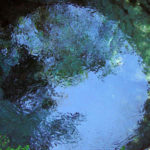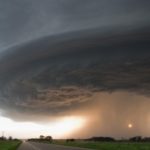Interesting facts about the rain
 Rain is an integral part of the weather on our planet. Somewhere on it they pray, and somewhere they curse it – it all depends on the country and on what this rain carries with it. In arid lands, the water pouring out of the sky is the greatest good, and in the rainy parts the rain is hateful to all the locals. Be that as it may, nothing can be done with it – if the rain has begun, it remains only to wait patiently when it will end.
Rain is an integral part of the weather on our planet. Somewhere on it they pray, and somewhere they curse it – it all depends on the country and on what this rain carries with it. In arid lands, the water pouring out of the sky is the greatest good, and in the rainy parts the rain is hateful to all the locals. Be that as it may, nothing can be done with it – if the rain has begun, it remains only to wait patiently when it will end.
Dryest valleys in Antarctica are rightly considered to be the dryest place on the planet – there have been no precipitation for millions of years.
The rainiest place on the planet is Mount Vaileale, USA, Hawaii.
The diameter of a large rain drop can be up to 6-7 millimeters. Larger drops do not reach the ground, scattering into smaller ones still in the air, no matter how strong the rain is.
After hurricanes, sometimes it rains from snakes, frogs and other creatures, if a hurricane raises a fair amount of them into the air. This has happened, and these cases are officially documented.
Rainbow can only be seen during the rain.
According to the chronicles, in 1209 in the west of modern Europe, the rain continued, not stopping, for about two and a half months – from May 20 to August 9.
Rains are not only on Earth. For example, on Titan they also happen, only they are there not from water, but from liquid methane.
Rain is due to its invention of the game of darts. Bowmen, who did not lose the competition, went to the tavern from boredom, where they began to train in throwing short darts at the target.
The Netherlands and Belgium are considered to be one of the rainiest countries in Europe and the world as a whole.
In Thailand, rains almost never go in the daytime – only at night.
In Russian weather forecasts, the phrase “short-term rain” means that the expected duration of the rain will not exceed three hours.
The rainiest inhabited locality in the world is the city of Cherrapunji in India.
In Portugal, rain is quite an official reason for being late for work.
In the US, Ohio, there is the town of Winesburg. It is noteworthy that on its territory for more than a hundred years every year on July 29 it rains.
There is an allergy to rain (not to the water, but to rain, more precisely, to the bacteria in the rainwater). Fortunately, it occurs vanishingly rarely – an average of one case per hundred million people.
Annually about 519 trillion tons of water is poured onto the Earth. Of course, all this water falls from heaven not once or twice – evaporating, it rushes upwards, soon to rain again down.
In particularly hot deserts, sometimes rainwater evaporates, not having time to fly to the ground.



























